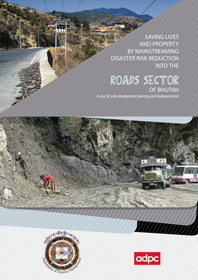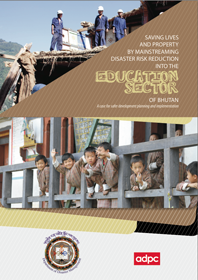- About Us
-
Who we are
-
- Publications
-
- ADPC Academy
-
MediaADPC'S NEWS
Government agencies trained on disaster risk reduction in Mongolia Government agencies trained on disaster risk reduction in Mongolia
3 - 6 Jun 2014
Ulaanbataar, Mongolia
A three-day training began today in Ulaanbataar, the capital of Mongolia, with over 40 participants from key government bodies, including national line agencies such as the Ministry of Transportation, the Ministry of Construction and Urban Development, and the Ministry of Agriculture, as well as representatives of district and municipal governments. The training, jointly organized by ADPC, the National Emergency Management Agency of Mongolia (NEMA) and UNDP, will focus on mainstreaming disaster risk reduction into development planning at national and local levels in Mongolia.
The training was inaugurated by Deputy Chief of NEMA Mr. T. Badral, UNDP's Deputy Resident Representative Mr. Thomas Eriksson, and Mr. Irfan Maqbool from ADPC who all emphasized the great need for increased mainstreaming of disaster risk reduction in Mongolia.
“Mongolia needs comprehensive mainstreaming of disaster risk reduction and climate change adaptation into development,” said Mr. Badral. “I hope you also recognize the need for this.”
The training is part of a tripartite project between ADPC, NEMA and UNDP. Other activities under the project include the development of a mainstreaming action plan for Mongolia and the implementation of a series of policy measures for mainstreaming. Similarly, two provincial trainings have already been undertaken on community-based disaster risk reduction, and a national framework for community-based disaster risk reduction has been formulated.
ADPC with NEMA and UNDP are looking to extend these current activities into 2015. There will be new initiatives formulated with local and international NGOs, as well as development partners, for strengthening community-based disaster risk reduction in the country. These will include working with communities on structural measures for disaster risk reduction, undertaking community-based risk assessments, linking community-based disaster risk reduction with local development planning, and mainstreaming information gathered during the community-based risk assessment into local development planning and policy making processes.
There is a need for greater coherency, coordination and collaboration between all agencies engaging in community-based disaster risk reduction in Mongolia, in order to ensure effective operations.
Related PublicationsLatest NewsRelated Trainings
-



